
|

|
|
| Home | Instruments | Science | Experiments | SiteMap |
Intro Next page Previous page
In the previous tutorial, we saw that the unit cell was not doing a very good job of indexing the diffraction peaks. Since a large number of peaks did have computed reflections at least partly overlapping the observed peaks, we are close enough to fit the unit cell parameters using a refinement. If that were not true -- the tick marks did not fall in the range of the peaks, refinement would not be possible.
GSAS/EXPGUI Alumina tutorial (part 7)
Fitting the Unit Cell
One the Phase panel, turn on the flag to refine the unit cell parameters (upper right), as shown below.
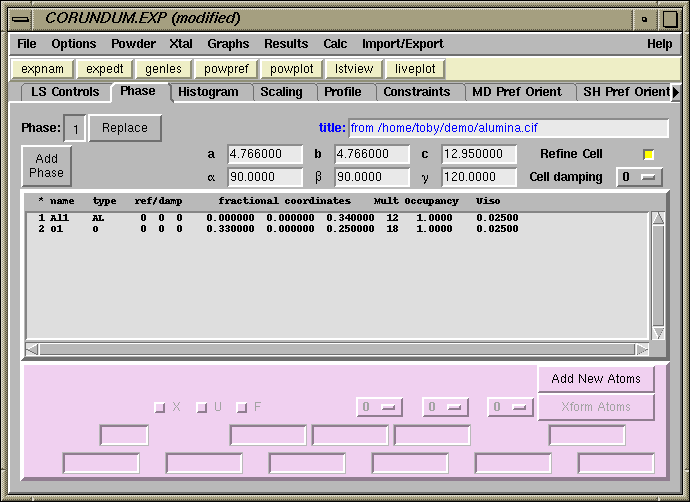
Also, increase the number of cycles to 6.
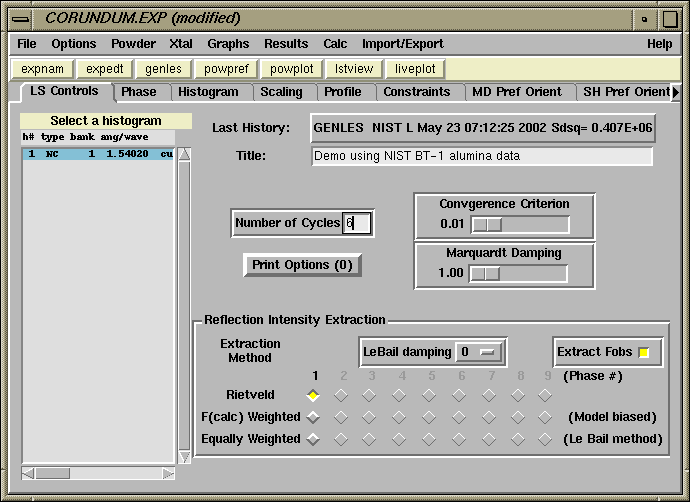
Run GENLES (as before). Note there are now 9 parameters (scale, 6 background, + 2 cell) and that the fit significantly improves, as seen below.
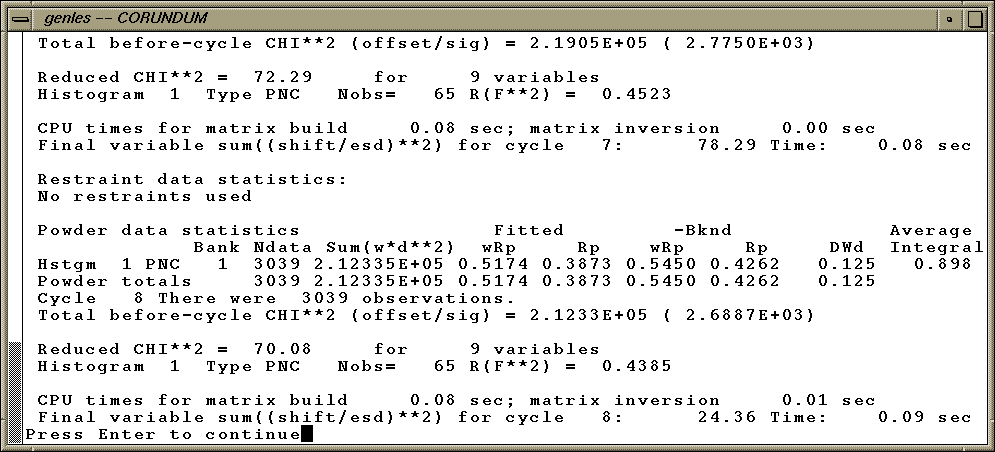
(As before, press Enter & load the modified experiment file into EXPGUI.)The peak positions are fit much better than before, as seen in the LIVEPLOT output below.
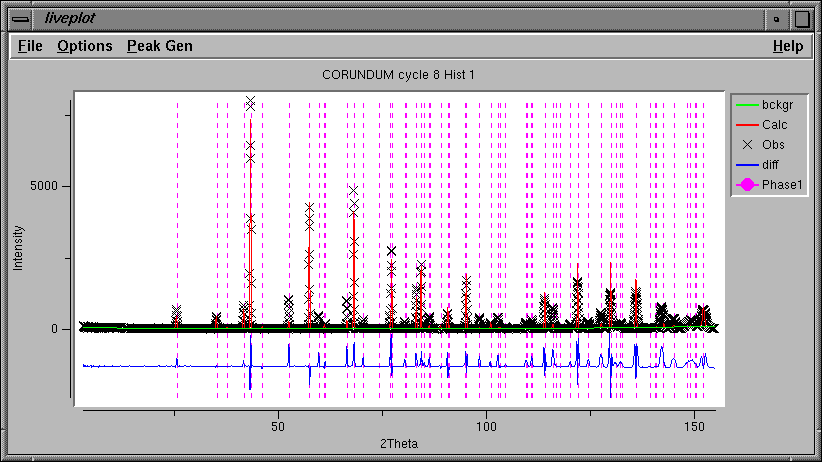
Since the peak positions have changed significantly, we now need to rerun POWPREF and use the new peak positions to decide which data points need to be indexed with each reflection.

It is not strictly necessary to run GENLES again, but note that CHI-squared improves from 70 to 60 just from the better indexing.
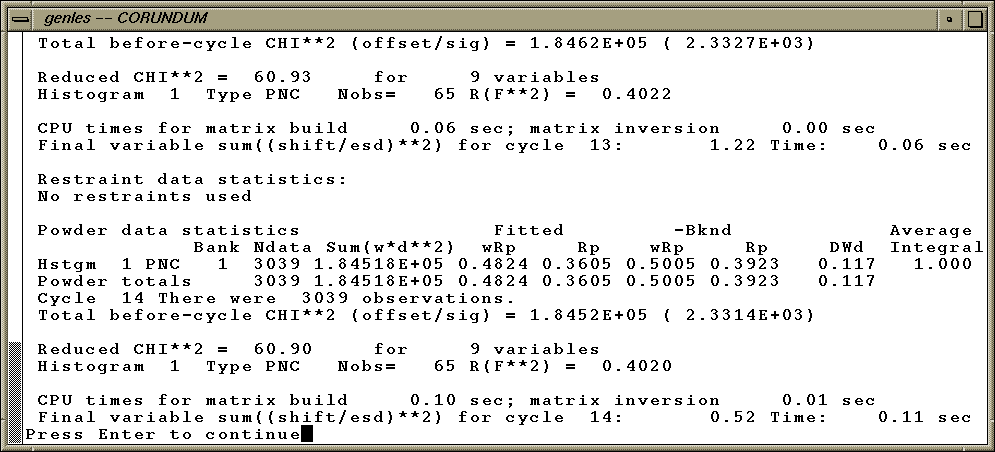
Previous: Plotting the Initial Fit
Next step: Fit the Diffractometer Zero Correction
Comments, corrections or questions: crystal@NIST.gov
Last modified 18-July-2003
$Revision: 1.1 $ $Date: 2002/07/18 20:45:10 $